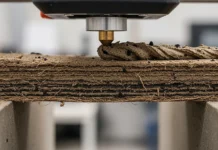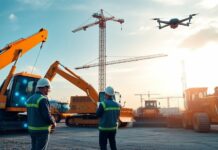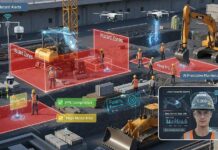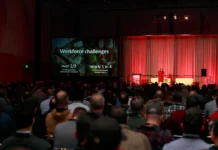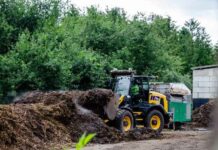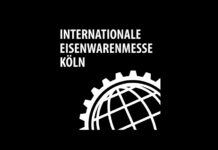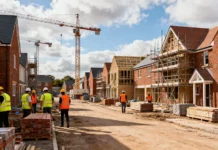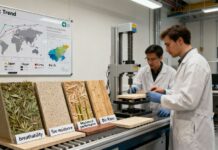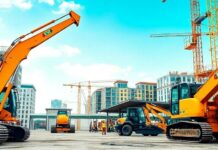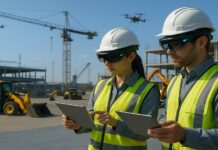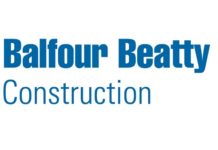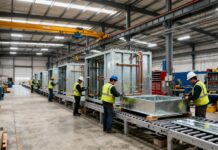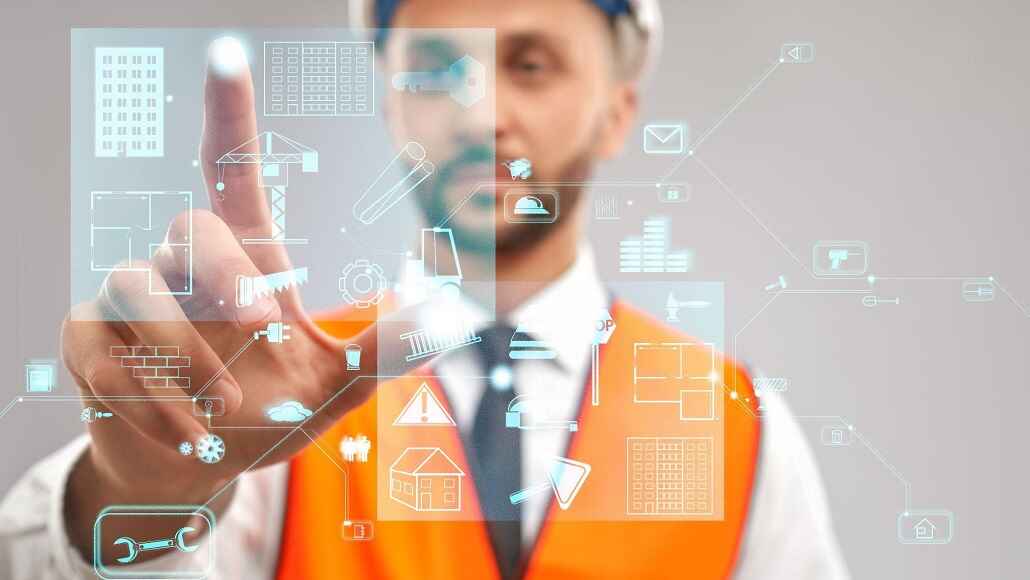Construction in the U.S. has long been seen as a physical job with predictable routines. That view is shifting. Artificial intelligence is entering job sites, reshaping tasks, and raising new possibilities for workers. This change could open doors for skilled labor across cities, towns, and even overlooked industrial regions.
Machines now handle data, map out schedules, and boost on-site safety. These tools are part of a broader transformation. As AI helps reduce waste and delays, the need grows for people who can work with smart systems. This shift could renew the role of blue-collar jobs, giving them fresh purpose in a rapidly evolving field.
AI-Driven Workflows Are Changing the Nature of Labor
AI is changing how construction sites operate. Planning, monitoring, and scheduling now move faster with the help of smart tools. Drones scan job progress. Sensors follow material use. Algorithms suggest better timelines before problems begin.
These tools shift how people work. Instead of removing workers, AI creates new responsibilities. Crews are learning to operate machines, interpret data, and fix technical issues. Physical work combines with digital awareness. That makes skill development more important than ever.
This change appeals to younger workers who want hands-on jobs that also involve tech. For older crews, it opens a door to longer, safer careers. Smart tools help reduce strain while making projects more efficient.
As tasks evolve, construction keeps its need for skilled hands. The tools may be new, but the value of human input remains essential. AI doesn’t replace labor. It transforms how that labor is used.
The Reskilling Surge: Training for a Smarter Workforce
Construction sites are evolving. As AI tools assist with scheduling, logistics, and planning, crews are expected to do more than manual work. They now interact with systems that require quick thinking, technical awareness, and safety-first decision-making.
This shift is renewing interest in certifications. Workers are taking short courses in equipment handling, site safety, and digital workflows. Certifications don’t need to be tech-specific to remain useful. For example, having official forklift certification continues to be essential for crews managing material movement around increasingly automated sites. When paired with AI training, it prepares workers to operate safely and efficiently within smart job environments.
Local Manufacturing Revival: Can AI Bring Production Back Home?
The construction industry depends on materials arriving on time and at scale. AI is helping reduce delays through smarter forecasting, inventory tracking, and supplier coordination. This improved efficiency is giving manufacturers a reason to bring production closer to project sites.
Faster turnaround and fewer logistical gaps make local sourcing more attractive. Builders can rely on nearby partners instead of waiting for shipments. That shift created new roles for welders, fabricators, technicians, and machinists across the U.S., especially in regions where industrial jobs had disappeared.
AI also supports flexible production. Smaller facilities can now respond to custom orders and on-demand needs without massive overhead. With smarter machines and localized workflows, the return of American manufacturing becomes more practical and more sustainable.
America’s Certification Edge Over Global Competitors
One advantage the U.S. holds in a competitive global market is its strong certification infrastructure. Organizations like OSHA and NCCER set clear rules for safety, quality, and responsibility. This system protects workers and builds trust across industries.
As AI becomes more common on job sites, these certifications act as a foundation. Workers trained under strict guidelines are better prepared to adapt to new technologies. A crew that understands safety protocols can more easily integrate automated tools, knowing how to operate within structured systems.
In contrast, some countries lack the same level of oversight or consistent enforcement. That gap gives the U.S. a competitive edge as AI-driven construction expands. International firms looking for reliable partners often turn to U.S. companies because of this built-in quality assurance.
Strong standards don’t slow progress. They enable it. And in an industry moving toward smart tools, they’re more relevant than ever.
Small Towns, Big Opportunity: AI in Local Projects
AI is lowering the barriers that once kept high-tech solutions out of small towns. Tools like automated surveying, predictive scheduling, and remote monitoring reduce the need for large on-site teams while keeping projects on track. That makes it easier to build efficiently in places with limited local resources.
Construction companies can now take on projects in rural areas without sacrificing quality or control. This shift brings meaningful work to regions that have seen steady job loss. Local tradespeople can train for roles that combine traditional skills with new digital tools, creating fresh pathways for steady employment.
It’s not only cities that benefit from smart construction. Smaller communities can now get better roads, schools, and housing thanks to AI-powered systems. As projects spread beyond metro areas, the reach of construction careers grows, too.
Addressing Barriers to Implementation
AI in construction can open doors, but it won’t happen evenly without careful planning. Some workers and communities are better positioned than others to take part in this shift. To make progress truly inclusive, the industry must identify what limits access and act with urgency and intention.
Unequal Access to Infrastructure
Advanced tools rely on stable connections. But many rural and underserved areas still struggle with slow internet or outdated systems. Without a reliable digital infrastructure, AI tools can’t function properly on job sites. This leaves some workers and regions out of reach, no matter their skill level.
Limited Training Availability
Workers need new skills to stay competitive, yet access to training remains uneven. Some live far from institutions offering relevant programs. Others may face financial or scheduling barriers. Expanding low-cost, flexible, and mobile training programs can help remove these limits and give more people a real chance to grow.
Policy Gaps and Slow Support
Without thoughtful policy, innovation can move faster than workforce protections. Guidelines around automation, retraining, and labor rights often lag behind the pace of technology. Stronger public investment and coordinated efforts between government and industry are needed to align tech adoption with fair labor support.
Wrapping Up
AI in construction holds the potential to spark a true blue-collar resurgence. Creating new kinds of skilled labor and reviving demand for certified workers gives American trades a path forward in a changing economy. The tools are ready, and the groundwork exists. What remains is the commitment to make this shift inclusive, intentional, and lasting. If done right, AI could lead the next era of U.S. industrial strength, one worker at a time.




